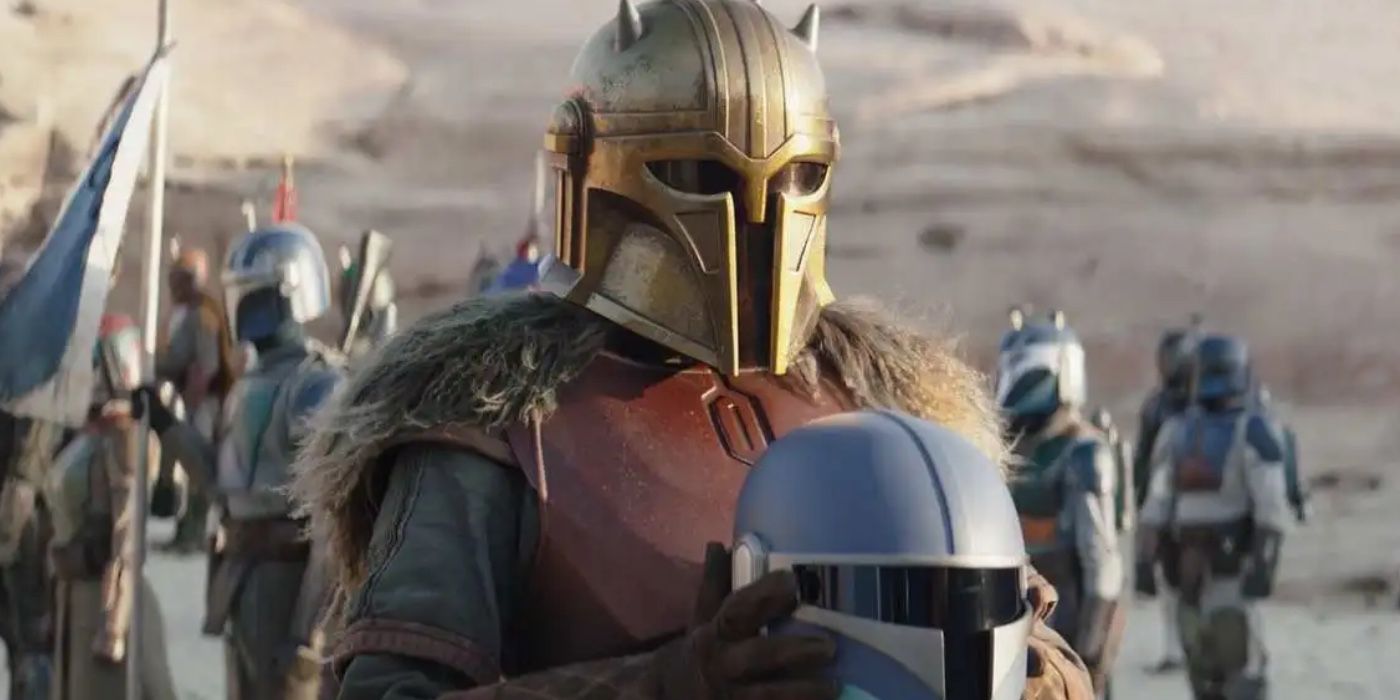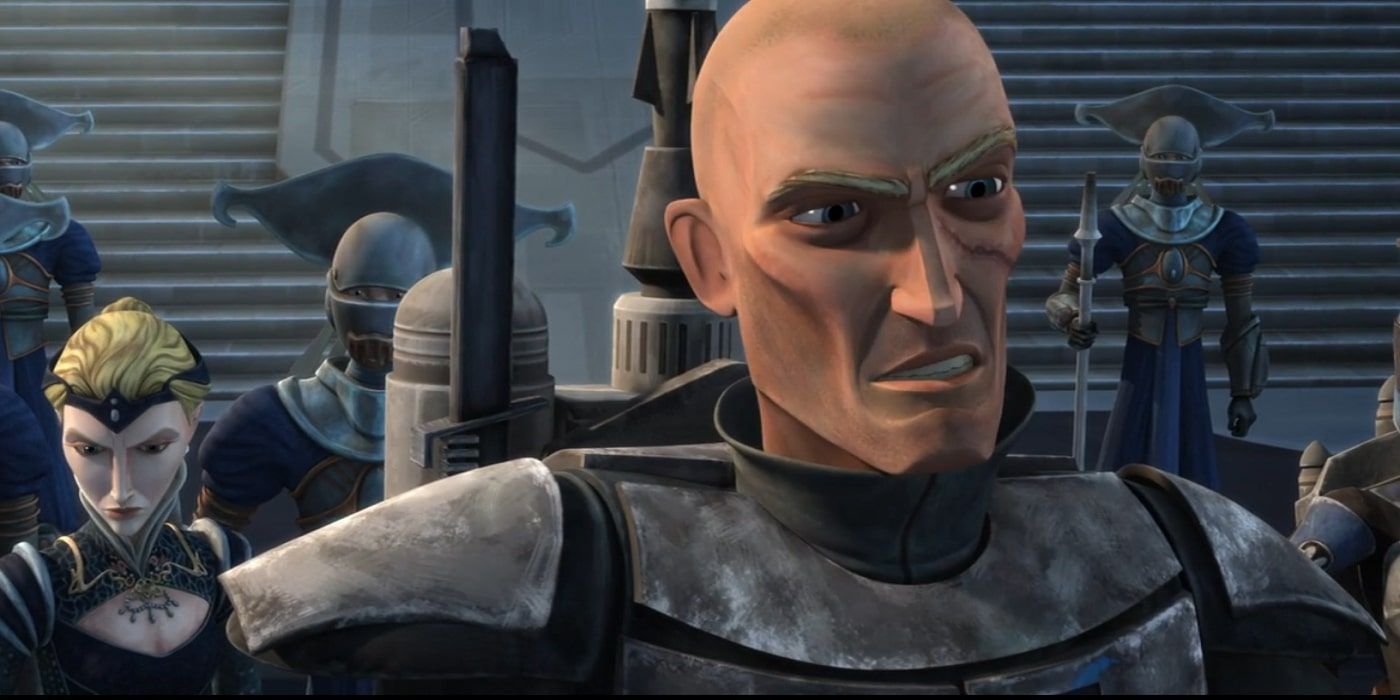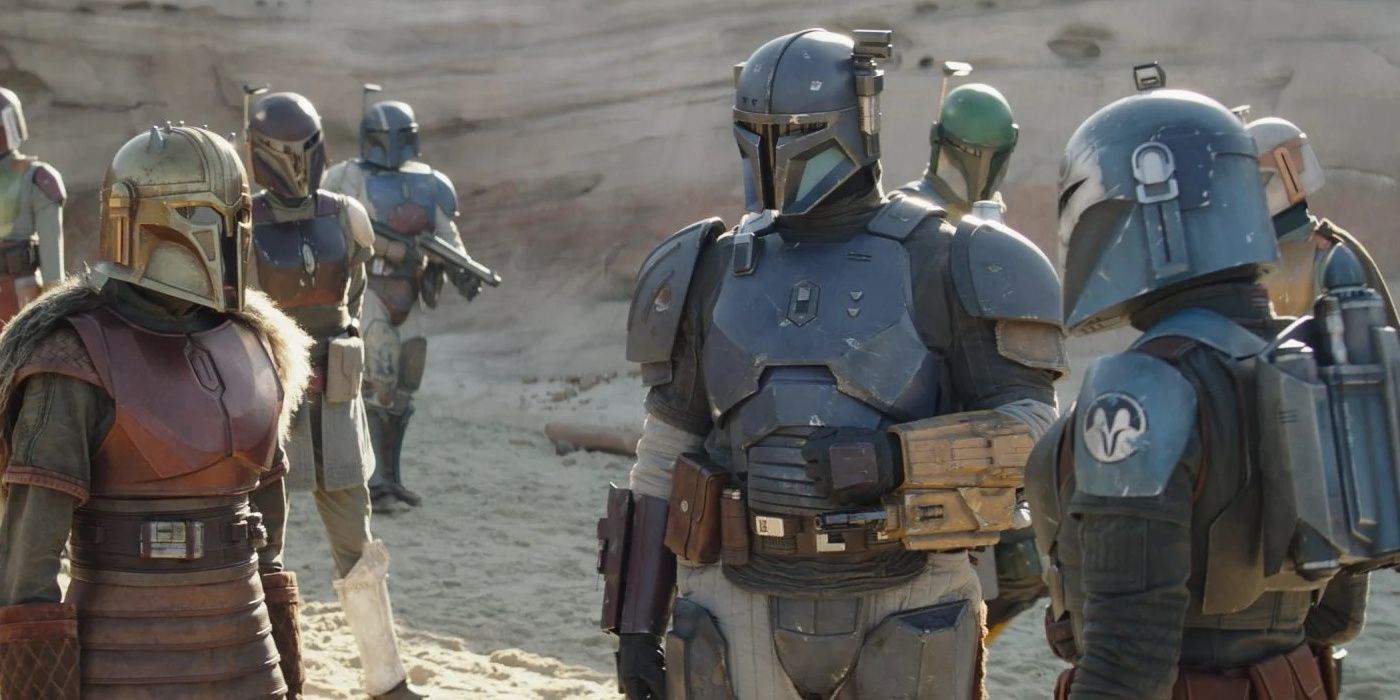The following contains spoilers for The Mandalorian Season 3, Episode 7, "Chapter 23: The Spies," now streaming on Disney+.
When The Mandalorian began, long-time Star Wars fans were more than a little confused by the Creed observed by Din Djarin's Tribe. In their previous appearances on the animated series The Clone Wars and Star Wars Rebels, Mandalorians had regularly removed their helmets and never once uttered the phrase "This is the Way." What at first seemed to be a radical reimagining of Mandalorian culture was soon explained, as Season 2 revealed that Din Djarin had been raised by a sect known as the Children of the Watch, who believed in restoring the ancient Way of the Mand'alor.
Since their name was first spoken in Season 2 of The Mandalorian, little else has been revealed about the Children of the Watch. Their name suggested a connection to The Clone Wars' Mandalorian splinter cell known as Death Watch, as did the Death Watch markings worn by the Mandalorians who took in a young Din Djarin in Season 1's flashback sequences. Now, "The Spies" has finally confirmed the nature of the Children of the Watch's relationship to Death Watch, revealing how their origin ties into a tragedy that has haunted all of Mandalore throughout its history.
Death Watch Is Dead, Long Live the Children of the Watch
"The Spies" sees Bo-Katan Kryze, accompanied by Din Djarin, the Armorer and a selection of other Mandalorians, on a mission to Mandalore. Ahead of their ultimate objective to reclaim their home world, these Mandalorians volunteer themselves for a scouting mission to ensure the planet is safe and to locate the Great Forge. While exploring Mandalore, the recon party encounters a group of survivors who have remained on the planet after the devastation wrought by the Purge. These survivors welcome Bo-Katan's Mandalorians aboard their ship.
As the different Mandalorian factions -- the survivors, members of Bo-Katan's stolen fleet, and the Children of the Watch -- all take the time to talk and become acquainted with each other, one of the survivors of the Purge asks the Armorer whether her Tribe is a part of Death Watch. The Armorer responds, "Death Watch exists no longer." She explains that Death Watch collapsed, separating into many warring factions, suggesting the Children of the Watch are just one of these groups born out of Death Watch's demise.
The Children of the Watch Are Another Product of Mandalorian Infighting
Factionalism and division have long troubled the Mandalorians. Throughout Season 3 of The Mandalorian, this has been Bo-Katan's greatest regret when considering the history of her people, as she told Din on their first excursion to Mandalore. Bo-Katan believes that it was the Mandalorians' inability to unite that left them vulnerable to the Empire, and it is this key weakness she seeks to overcome by leading the Mandalorians now. The origin of the Children of the Watch serves only to highlight further this key weakness that has long plagued the Mandalorians.
Since the Children of the Watch were introduced, fans have suspected they may have been connected to the Death Watch, perhaps as an evolution of that group. While such theories were not far from the truth, the fact that Death Watch fractured completely and broke into numerous factions confirms that the Children of the Watch are yet another result of Mandalorians' predisposition to infighting. The Children of the Watch's origin makes it clear that their distinct values and beliefs are linked to Mandalore's struggle for unity. Bo-Katan will have to overcome this deep-set factionalism and the division it has wrought if she is to reunite Mandalore.
New episodes of The Mandalorian are available to stream every Wednesday on Disney+.



